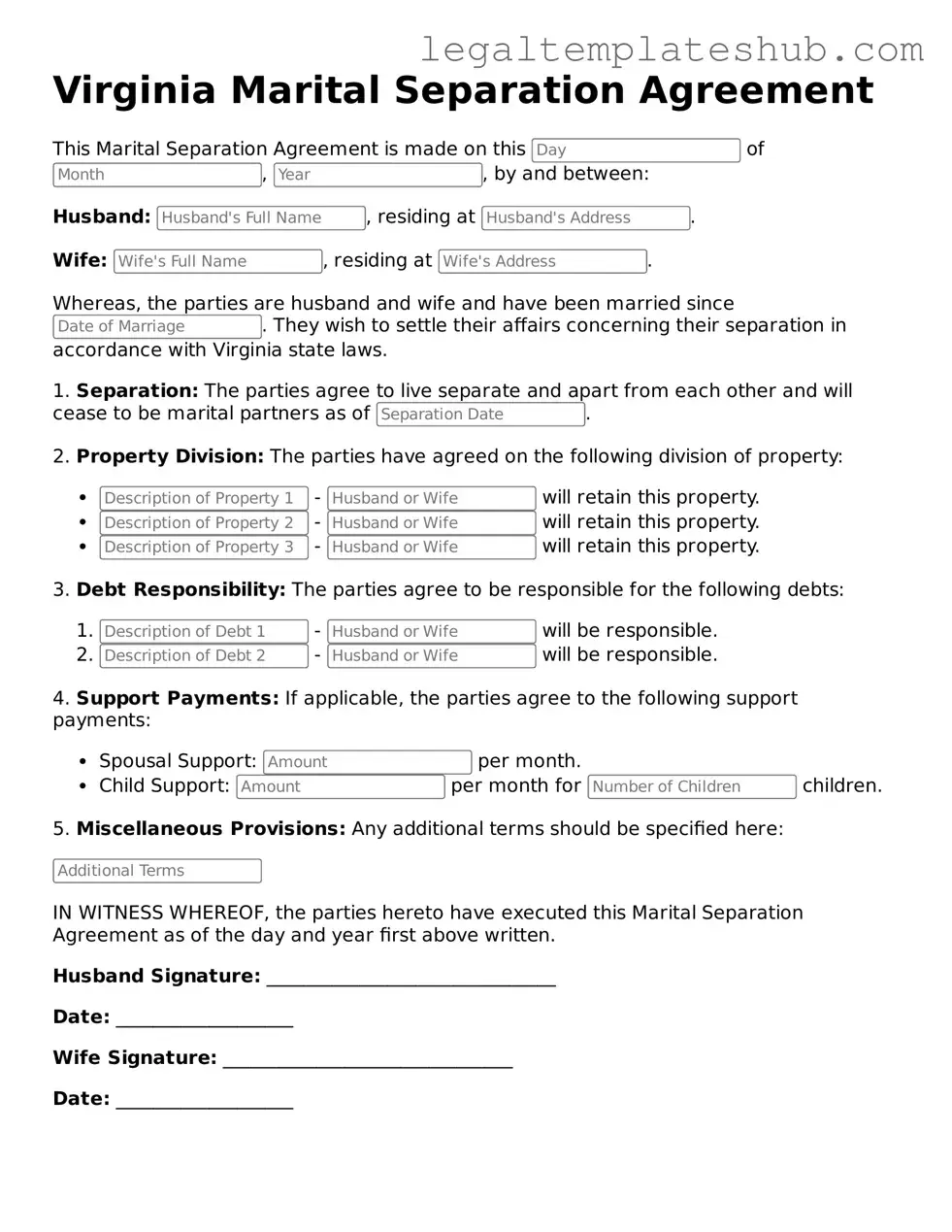Printable Marital Separation Agreement Document for Virginia
A Virginia Marital Separation Agreement is a legal document that outlines the terms of separation between spouses. This form addresses important issues such as property division, child custody, and support obligations. Completing this agreement can help both parties clarify their rights and responsibilities during the separation process.
Ready to get started? Fill out the form by clicking the button below.
Access Editor
